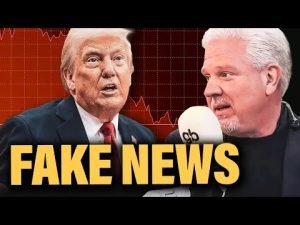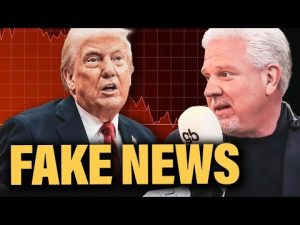In a world brimming with international trade complexities, President Trump’s recent moves on tariffs are causing quite a stir. Just when you thought the game of economic chess couldn’t get any more intricate, enter Trump’s “big beautiful” trade strategy, complete with a fresh round of reciprocal tariffs aimed at China. The Senate Republicans have given their nod of approval to the framework, and it seems like the GOP is off to the races with a bold transformation plan for the American economy. Meanwhile, those on the left are switching to doomsday prepper mode. Apparently, for some, buying a year’s supply of canned beans and tinfoil is the logical next step when faced with a tariff—though one wonders how that squares with their previous trade policies that championed the very concept of reciprocity they now bemoan.
The backdrop to this tariff talk is no small deal. The current disparity is striking enough to give pause; while the average tariff on Chinese goods coming into the United States is a mere 2%, Americans face a hefty 35% tariff on products going the other direction. No wonder trade experts and pundits alike are waving red flags (and not just the kind made in China). For years, China has been getting away with calling itself a developing nation while taking full advantage of its status, and in return, some Democrats have cheerfully played along with the tune. But now that Trump is taking decisive action, the change in their rhetoric is enough to cause whiplash.
President Trump’s approach is aggressive, and, let’s face it, he’s no stranger to making headlines or taking risks. The stock market has taken a hit, with substantial drops in key indexes, but that’s just one part of the story. The irony here is we’ve seen a remarkable climb in market value since Trump first took office despite the current dips. Those gnashing their teeth about losing retirement funds might consider a little historical perspective; over the decades, the big picture for U.S. markets still spells growth. But as they say, patience isn’t just a virtue; it’s a necessity when you’re dealing with long-term trade goals.
Now, no one is claiming that tariffs won’t bring some growing pains. Higher prices and potential layoffs are all on the table. Yet, Trump’s administration seems unflustered, brushing aside the short-term pain for what they foresee as long-term gain. There’s a belief here that given time, these tariffs on nations like China will start to pay off, restoring balance and fairness to international trade. While critics might argue that Trump’s focus on tariffs is pulling attention away from other issues, Trump’s team would counter that it’s all part of a broader strategy, one that includes tax cuts, budget adjustments, and deregulation.
What Americans need now is a bit of patience, although that seems increasingly rare in our short-attention-span society. How long will voters stick with the plan amidst their financial frustrations? The political runway may not be endless, and Democratic opponents are keeping a keen eye on an opportunity to pounce. But why keep such a narrow focus? Countries like Vietnam, Thailand, and even Canada are lining up to negotiate trade deals with the U.S. That’s a sign that Trump’s strategy, however contentious, is prompting action. The question looming largest now is whether China will join these ranks or continue its own game of chess. If Trump’s gamble pans out and other nations come around, there might just be a victory in those proverbial cards. But only time will tell if this bold economic experiment will pay dividends—or if Trump’s trade hand was a bluff too far.







